Disc and plate
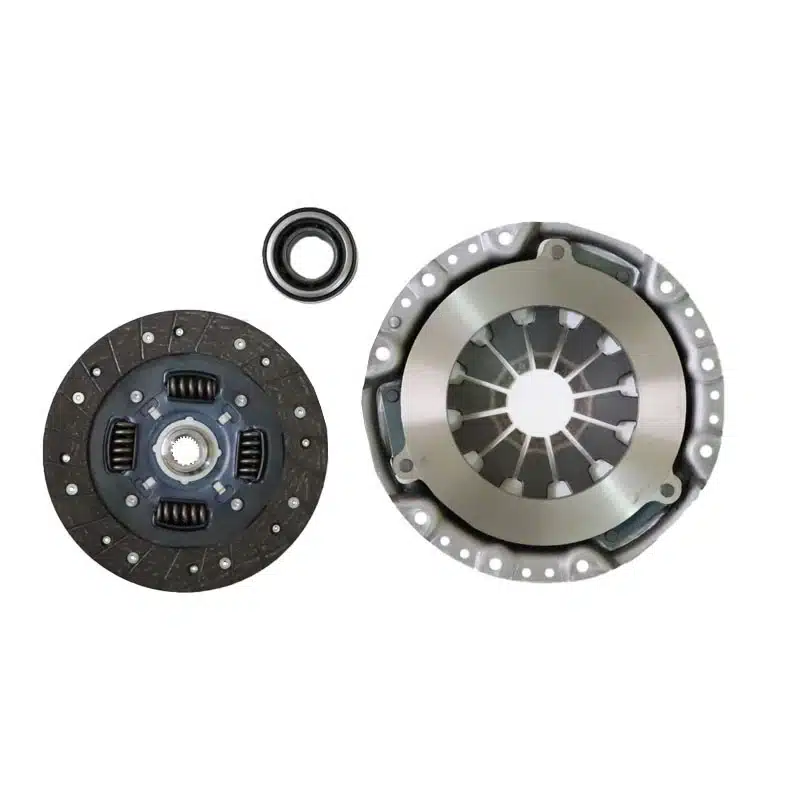
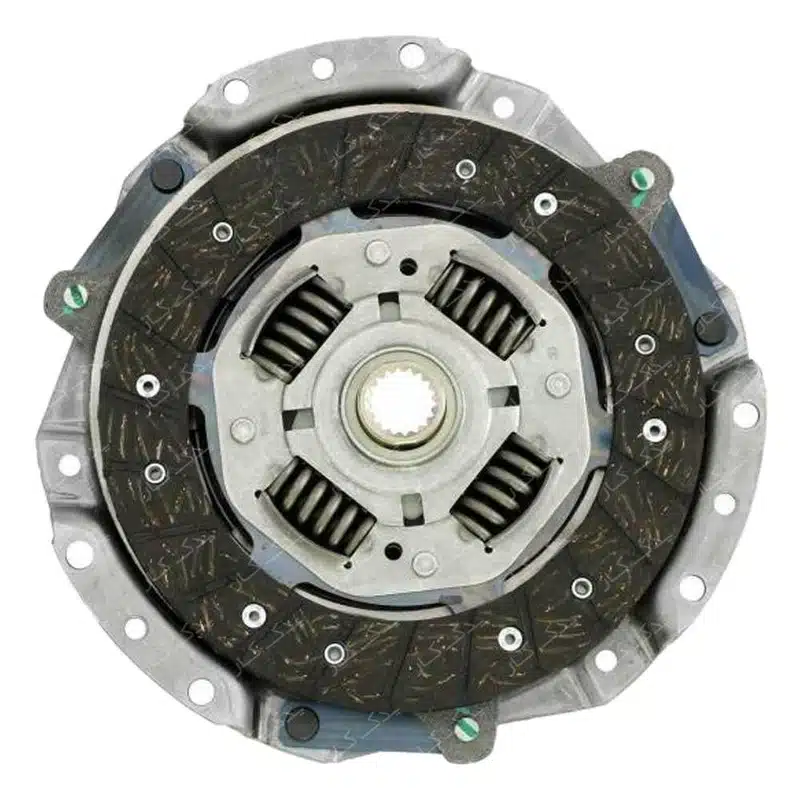
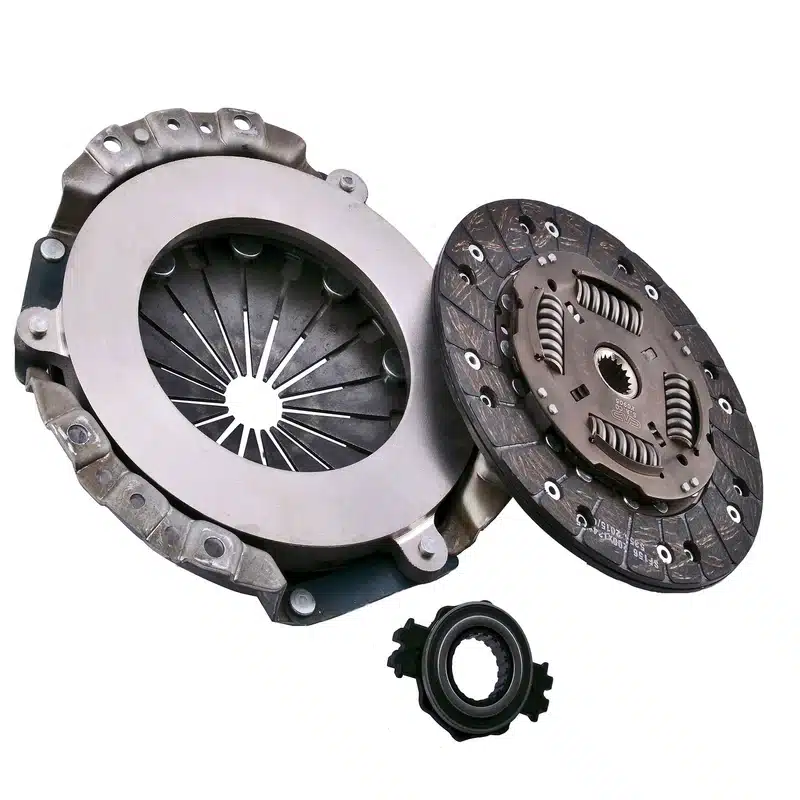
What is a clutch disc and plate?
Regardless of the type of car gearbox, whether it’s automatic or manual, the engine power cannot directly enter the car’s gearbox and differential; because in this case, the driver will not be able to change gears. In order to easily change gears in a manual gearbox, there must be a mechanism between the gearbox and the engine that cuts off the flow of power sent from the engine to the gearbox before changing gears. Only in this case will the gear ratio change operation be performed easily.
If the power input from the engine to the gearbox is not temporarily cut off, then the driver will not be able to select the desired gear ratio using the lever inside the cabin, and change the gearbox status, for example, from gear one to gear two.
Automotive industry engineers have used the clutch disc and plate mechanism for this purpose so that the driver can temporarily disable the flow of engine power into the gearbox by pressing the clutch pedal, and after selecting the desired gear ratio, remove the foot from the clutch pedal; in this way, the engine power flows in the gearbox, but this time the gear ratio has changed and a different torque is transmitted to the wheels.
In general, the use of the clutch disc and plate system in car engines can bring about a significant improvement in performance, fuel consumption, and pollutant reduction.
How does the clutch plate work in manual cars
Before we talk about when to change the clutch plate, it’s better to first let you know how this part works. The clutch plate is actually a metal plate with black linings. There is a grooved hole in the middle of the clutch plate where the gearbox shaft is placed.
The clutch plate, along with a spring-loaded metal disc called the clutch disc, is screwed onto the flywheel. Then the gearbox enters the hole of the clutch plate from its input shaft and engages with it.
In this way, whenever the car engine is on, the crankshaft power will be transferred to the clutch plate. The clutch plate, which is engaged with the gearbox shaft, can rotate the gearbox gears.
When it is necessary to cut off the engine power to the gearbox, the driver must press the clutch pedal. This pedal eventually exerts pressure on the clutch bearing, which is located on the gearbox shaft, through the clutch cable. The clutch bearing also, by pressing on the feather springs of the clutch disc, will cause this part to separate from the clutch plate. When the disc does not press on the plate, the engine power will no longer enter the gearbox.
In this way, the driver is able to perform the gear change operation. Then, by releasing the clutch pedal again, everything returns to its original place and the engine power enters the gearbox.
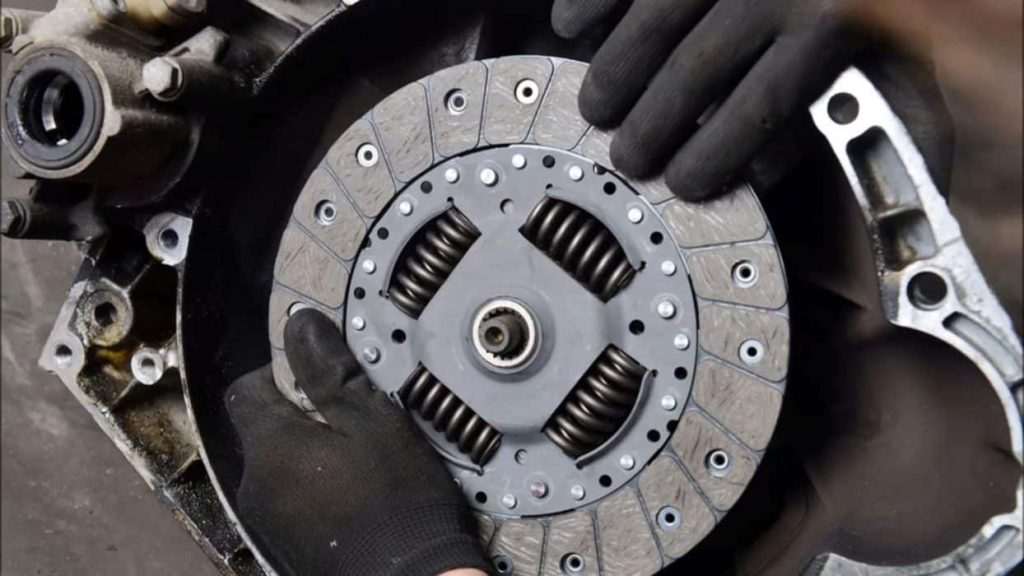
Difference between a worn and new clutch plate
Usually, clutch plates will lose their lining thickness over time and due to heavy use. These linings are the most important factor in creating friction between the clutch plate and the flywheel, and if they do not have enough thickness, they will cause the clutch plate to slip on the flywheel.
Therefore, the engine power no longer fully enters the gearbox, and you feel that your car does not have enough power to move. In severe cases, where it is said that the clutch plate has slipped, the clutch plate lining is completely finished and no longer responds to power transmission to the gearbox.
Also, worn clutch plates may have damaged springs, which can lead to vibration in the clutch system. In addition to the clutch plate, the clutch disc will also wear out. The most common part of the clutch disc that usually encounters problems is the metal feather part that engages with the clutch bearing when pressing the pedal.
Determining when to replace the car’s clutch disc and plate
Replacing the clutch kit does not have a specific timing, so we need to be alert to feel the signs of its malfunction in the car and act sooner to replace the clutch.
Cases like decreased car acceleration, stiffness of the clutch pedal, car vibration when clutching, etc., are among these signs.
Factors shortening the life of the car’s clutch plate
By studying the following, you will understand what factors reduce the life of the clutch plate and cause the clutch plate replacement time to come forward:
Not changing the gear correctly
To ensure your clutch lasts longer, you need to know how to change gears correctly. When changing gears, the clutch pedal must be fully depressed so that the disc, plate, and flywheel are completely separated. Once the gear lever is in the new position, you should gently and not suddenly lift the clutch pedal to minimize tension on the clutch kit. This way, your disc and plate will not wear out prematurely, and this important and expensive part will perform its duty on the car for a longer time.
Choosing the wrong gear
Choosing the wrong gear can be one of the things that reduces the life of the clutch plate. Suppose you want to cross a steep hill. To cross the hill, you need gear one or at most two, but you, without considering the slope of the road and by applying a lot of pressure on the car engine, try to cross this steep path with gear 3 or even 4. Choosing the wrong gear causes a lot of pressure on the engine and disc and plate; as a result, both the life of the engine and the life of the disc and plate will be negatively affected by this move.
Driving in heavy traffic
Driving in heavy traffic puts a lot of pressure on the clutch assembly and significantly shortens the time to replace the clutch plate. Multiple clutch engagements and half-clutch movements in traffic are among the reasons that cause a lot of pressure on this part and cause the clutch plate to heat up. Therefore, it is obvious that driving in heavy traffic reduces the life of the clutch plate and advances the time to replace this part.
Accelerating quickly
If you are used to always moving with high acceleration, know that this action puts a lot of pressure on the clutch plate. As a result, the wear and tear of this part increases and its life decreases.
Carrying a large number of passengers
The more passengers and load in the car, the more pressure the clutch plate will have to bear in performing its duty. As a result, the linings of this part wear out faster, and the life of the clutch plate decreases significantly. So if you don’t want to replace your car’s clutch plate too soon, always try to move with the standard number of passengers and avoid placing unusually heavy loads in the trunk.
Moving with the wrong gear
As we mentioned before, you should be careful in choosing the right gear so that too much pressure is not applied to the clutch plate. For example, when you need more power, you should move with a heavy gear, but when you need to move quickly, you should lighten the gears so that too much pressure is not applied to the disc, plate, and car engine. Therefore, moving with the wrong gear is one of the most important factors causing extra pressure on the clutch plate and significantly reduces the time to replace the clutch plate.
Doing a burnout or spinning the wheels
Doing a burnout, or spinning the wheels, which is accompanied by wheel spin, can be a potential killer of the clutch plate. During a burnout, the clutch plate has to withstand a lot of pressure; as a result, its temperature increases significantly, and the life of its linings decreases. Therefore, by doing a burnout, you are effectively reducing the life of your expensive clutch plate and advancing the time to replace it.
Towing
If someone asks you to tow their car, know that by doing this, you are reducing the life of your clutch plate. Especially if the car to be towed is heavier than your car.
Therefore, you should know that with this move, sooner or later, you will have to spend money and replace the clutch plate of your car. So, as much as possible, avoid towing other cars and ask for help from tow trucks in these situations.
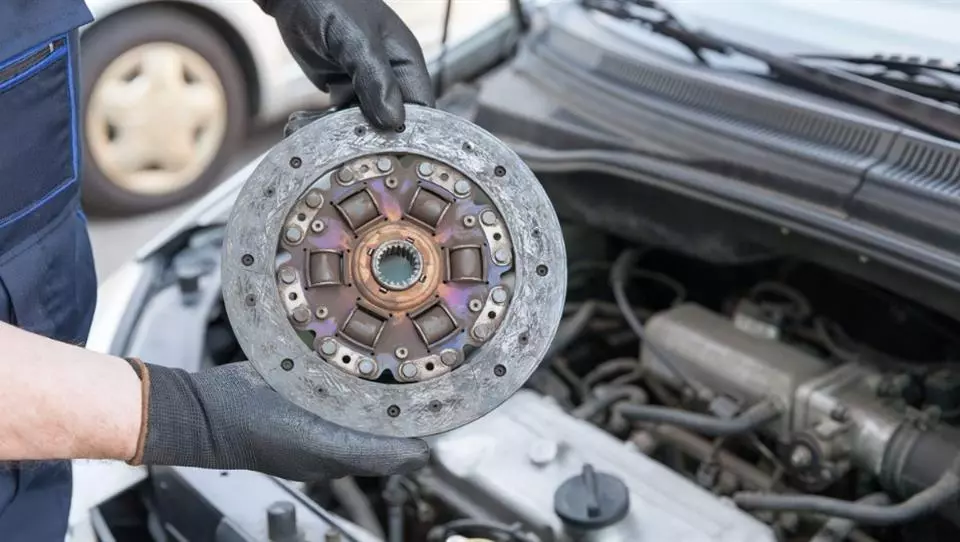
How to determine when to change the clutch plate
To accurately determine when to change the car’s clutch, you need to pay attention to a series of signs.
Stiffness of the clutch pedal
The stiffness of the clutch pedal can be a sign that it’s time to replace the disc and plate. Of course, the failure of the clutch cable may also not be insignificant in this matter, but anyway, if you are faced with the phenomenon of the clutch pedal stiffening, expect that these days your car’s clutch kit may completely fail; to the point that you might start the car and shift gears, but the car does not move. In these cases, the clutch plate has completely worn out and needs to be replaced with a new kit.
Jumping foot and gear noise
If you feel that after clutching, a lot of force is exerted on your foot and causes your foot to jump off the clutch, so to speak, and also a lot of noise is heard when changing gears, you should proceed to replace the disc and plate.
Lack of proper connection between engine speed and velocity
We all know that our car should move at a certain speed in different gears and at a specific engine speed. For example, a Peugeot Pars car can usually move easily at 3000 rpm up to 90 kilometers per hour in fourth gear. But if the car’s speed does not exceed 60 or 70 kilometers in such a situation, it should be considered a sign of a clutch disc and plate failure.
Difficulty in changing gears
When the clutch disc and plate are healthy, the gears are changed very smoothly and easily. If you feel that the gears are hard to change and the lever is hard to place in its place, you should look for the problem in the clutch disc and plate. Of course, sometimes the lack of proper adjustment of the clutch disc and plate can also be the cause of this problem, in which case you should solve this problem by adjusting the nuts on the clutch wire.
Car vibration at the start of movement
If your car’s clutch disc and plate have a problem, it usually vibrates at the start of movement. The failure of the disc springs and the clutch plate springs, in addition to the reduction of the plate brake, can be the cause of this problem.
Car not turning off
If you put the car in gear 2 and after you suddenly lift the clutch, the car does not turn off and gets on the road, know that the clutch disc and plate are probably in the last days of their life.
Need to change to a heavier gear uphill
If you feel that in normal uphill situations where you usually passed with light gears, you need to choose a heavier gear to create enough traction and power in the car to pass the route, it can be guessed that the clutch plate brakes are ending and cannot transfer enough engine power to the gearbox. This condition can be a sign of a clutch disc and plate failure.
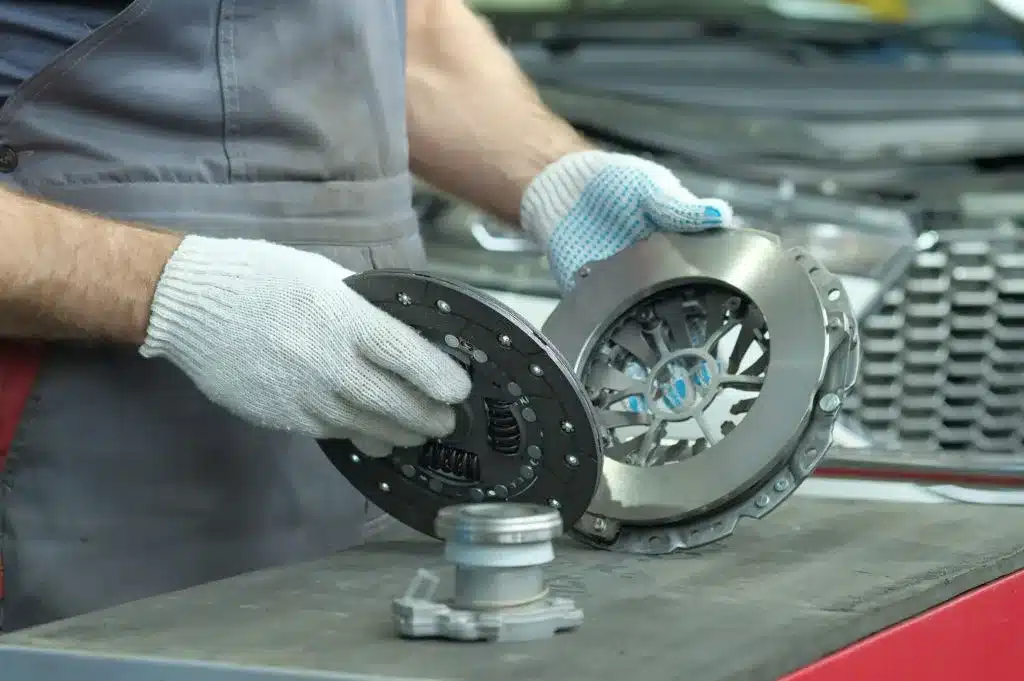
Lengthening the life of the disc and plate
To lengthen the life of the disc and plate as much as possible, the way of driving with the car needs to be corrected. For example, avoid sudden movements like unusual acceleration so that the life of the disc and plate does not end soon.
Also, avoid carrying heavy loads and carrying passengers more than the standard capacity. In general, if the car is not under unusual pressure, the life of its disc and plate will not end soon. Of course, if the disc and plate are made of standard and high-quality material.
Consequences of not replacing the clutch plate
If you do not replace your car’s clutch plate on time, it is likely that the clutch plate will suddenly leave you on the road and the car will no longer be able to move. Also, a broken clutch plate can cause the flywheel to fail. The flywheel is an expensive piece that can usually be repaired to some extent by turning. But if the scratches from the clutch plate on the flywheel are deep and excessive, this piece needs to be replaced.
Therefore, it will impose a much higher cost on you. Also, a broken clutch plate causes more pressure to be applied to the engine and as a result, the possibility of reducing the useful life of the car and engine will not be far-fetched.
Clutch plate health test
To test whether the clutch plate is healthy or not, first make sure of the smooth, fluid, and vibration-free operation of your car’s clutch, because if there is a problem in this regard, the clutch is probably defective.
But in general, if you want to perform a clutch plate failure test, you should press the clutch pedal while the engine is running, put the gear lever in gear two, and bring up the pedal relatively quickly. If the car did not move and turned off, know that the clutch plate is probably healthy. But if the car moved, it is likely that the clutch plate has been smoothed a lot and needs to be replaced.
For the import of various types of spare parts, including spare parts for domestic and foreign cars, contact Tata Trading Company. Our connection with various companies around the world enables us to provide you with the best and highest quality spare parts from different brands, bringing you a profitable and easy trade.

